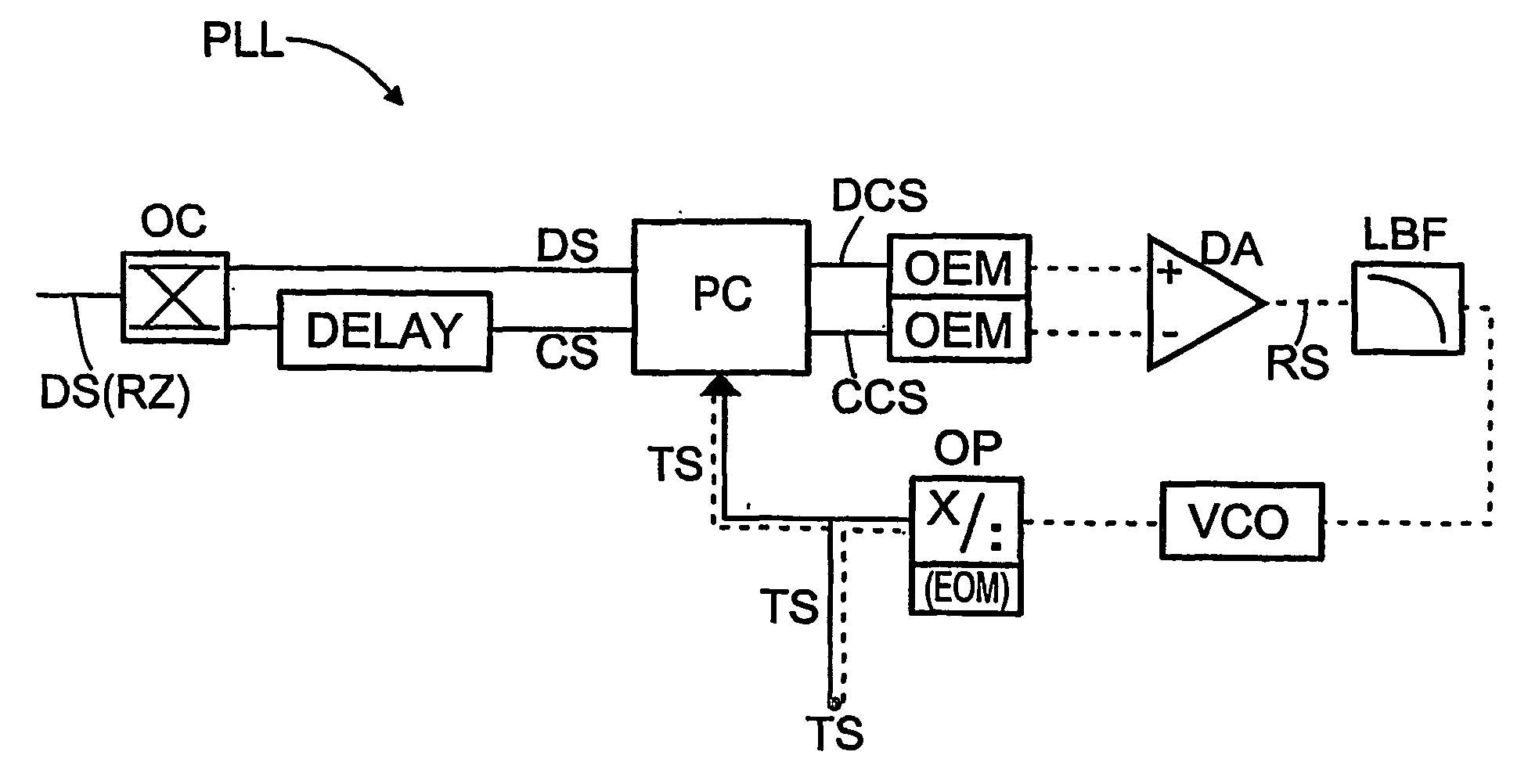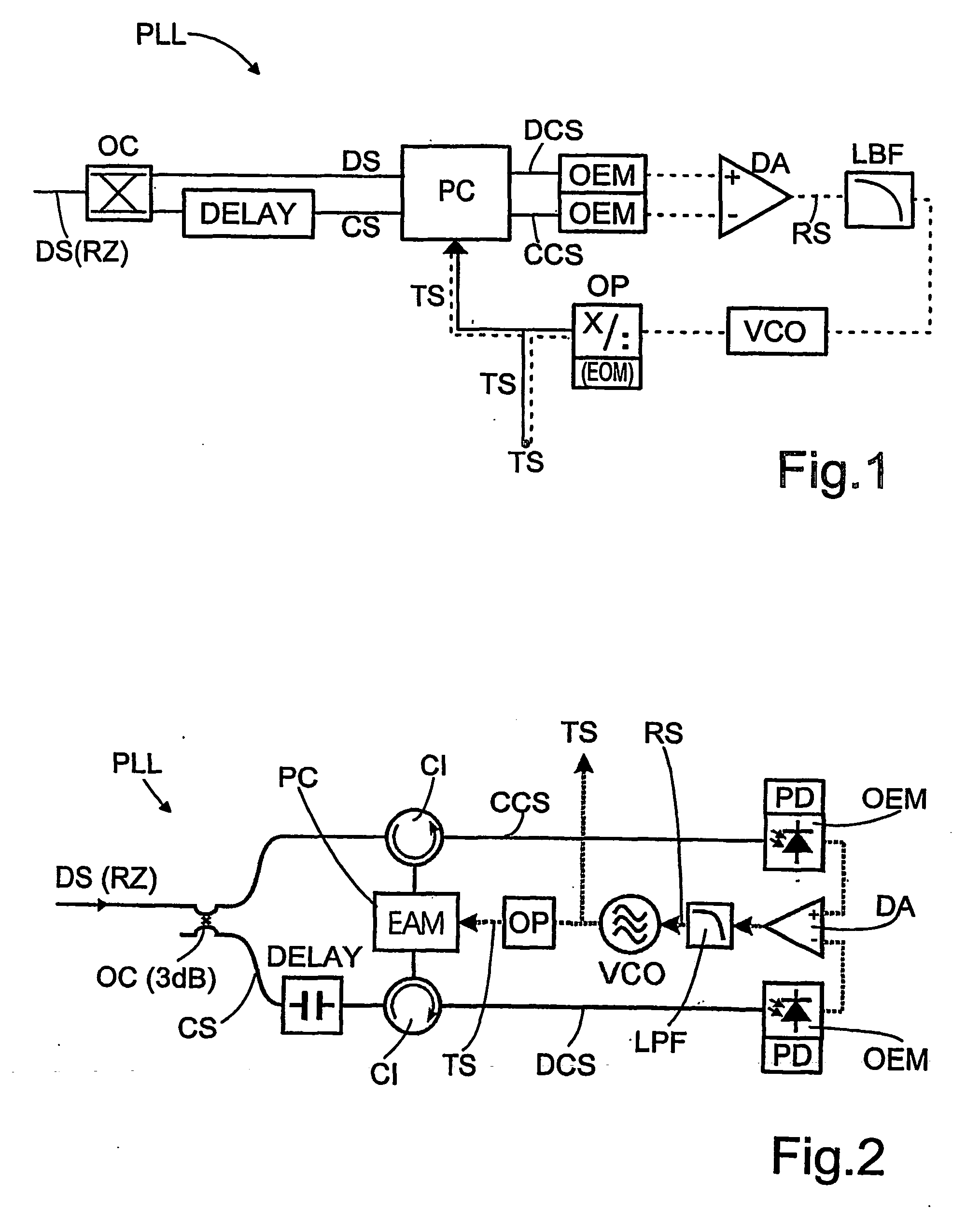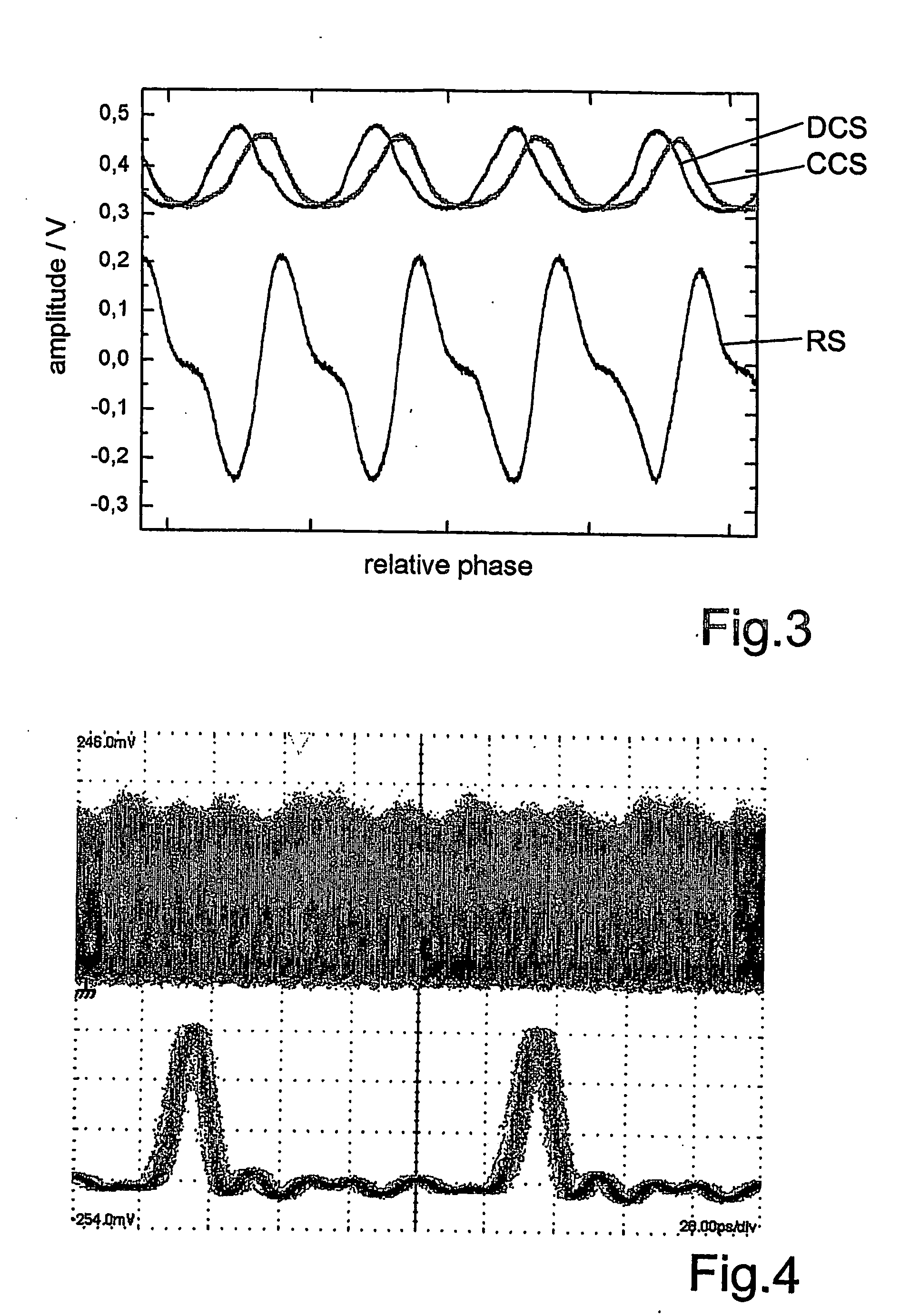Opto-electric phase-locked loop for recovering the clock signal in a digital optical transmission system
- Summary
- Abstract
- Description
- Claims
- Application Information
AI Technical Summary
Benefits of technology
Problems solved by technology
Method used
Image
Examples
Embodiment Construction
[0027]FIG. 1 schematically depicts an opto-electric phase-locked loop PLL by means of which the clock signal TS of an optical time division multiplexed (OTDM) data signal DS transmitted at a high frequency with return-to-zero RZ data pulses can be safely recovered. The optical paths are shown in solid lines, the electrical paths are shown in dashed lines. For the clock recovery, an output signal CS is initially generated by way of an optical extractor OC. This is fed through a phase delay element DELAY and is thus shifted in its phase relative to the data signal DS. Alternatively, the data signal DS may be fed through the phase delay element DELAY since it is only the relative phase shift between the two signals DS, CS which matters. The height and-shape of the switching window may be affected by the size set for the phase shift, preferably between ⅙ and ½ of the data signal period. The data signal DS as well as the output signal CS are fed unidirectionally or counterdirectionally t...
PUM
 Login to View More
Login to View More Abstract
Description
Claims
Application Information
 Login to View More
Login to View More - R&D
- Intellectual Property
- Life Sciences
- Materials
- Tech Scout
- Unparalleled Data Quality
- Higher Quality Content
- 60% Fewer Hallucinations
Browse by: Latest US Patents, China's latest patents, Technical Efficacy Thesaurus, Application Domain, Technology Topic, Popular Technical Reports.
© 2025 PatSnap. All rights reserved.Legal|Privacy policy|Modern Slavery Act Transparency Statement|Sitemap|About US| Contact US: help@patsnap.com



